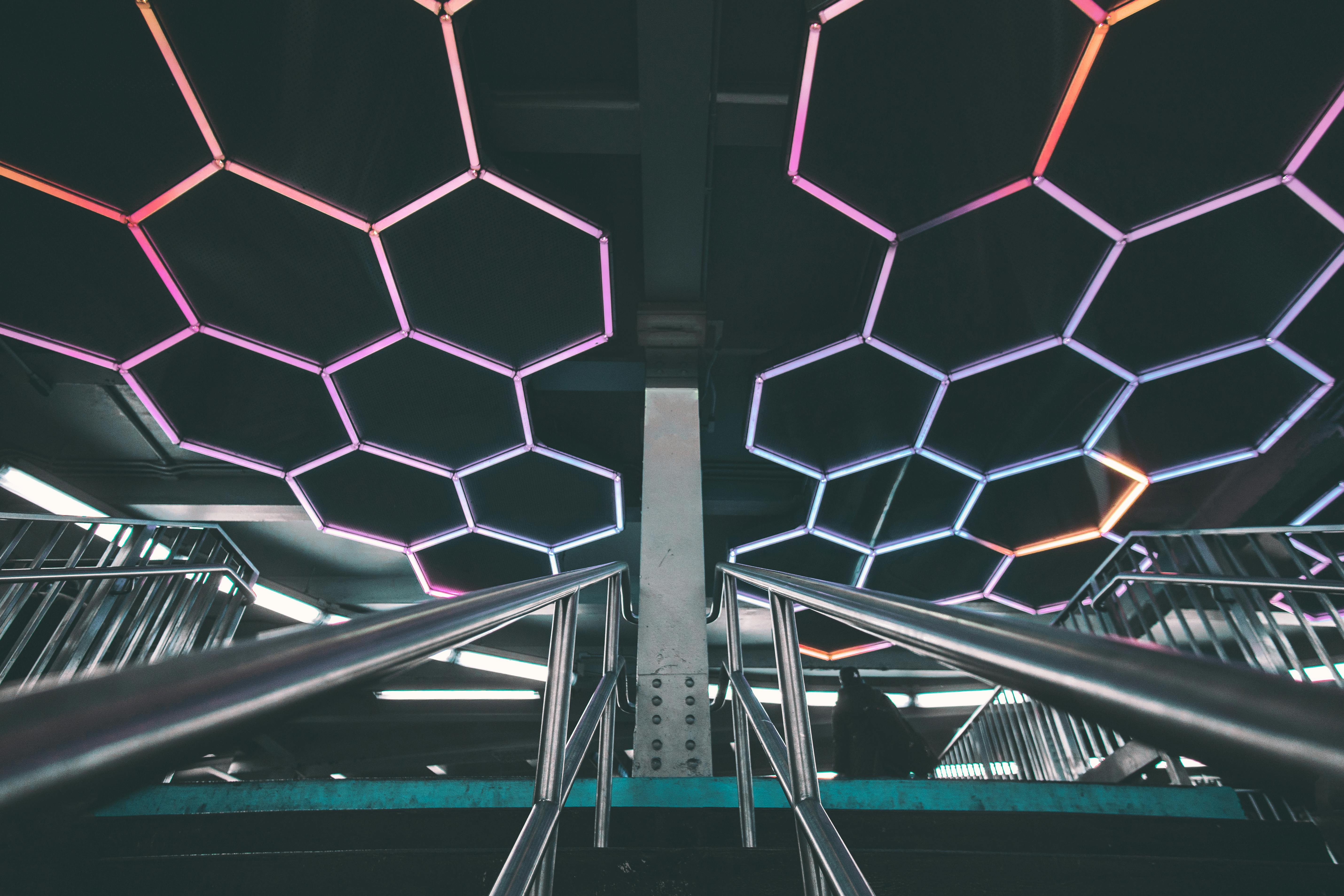

Can you have the privacy cake and eat it, too? We frame this question in the context native to data-driven companies forced to balance between legal requirements and data collaboration advantages.
Request a live demo
Want to see what else data clean rooms can do? Have a specific use case in mind? Let us show you.

Across industries, organizations are seeking ways to collaborate on data without introducing unnecessary risk. Secure data sharing has become the standard approach, supported by encryption, anonymization, and access controls. While these methods provide reassurance, they often force a trade-off between privacy, compliance, and the richness of insights that organizations can safely exchange. This means that even when secure data sharing follows best practices, it leaves gaps that can expose sensitive information to unintended parties or human error.
As data volumes grow and regulations tighten, the need for a more robust approach becomes clear. Data clean rooms represent a step beyond traditional practices. They allow multiple organizations to collaborate while keeping raw data completely private, achieving true sharing without sharing. This article explores what secure data sharing is, why it falls short, and how data clean rooms provide a more reliable, future-proof solution for privacy, compliance, and collaboration.
What is secure data sharing?
Secure data sharing is the controlled exchange of sensitive or confidential information between parties in a way that protects it from unauthorised access or misuse, while ensuring compliance with data protection and privacy regulations such as GDPR or HIPAA. Organizations adopt multiple methods to safeguard data as it moves between providers and consumers.
Common techniques include:
- Encryption: Protects data in transit and at rest. Public key infrastructure ensures that only the intended recipient can decrypt the information.
- Anonymization or de-identification: Strips identifiers from datasets to reduce exposure or aggregate data
- Access controls: Restricts visibility to specific users based on roles and permissions.
Why organizations use secure data sharing:
- To enable collaboration and innovation between companies, research teams, or institutions.
- To prevent fraud through cross-institution data monitoring.
- To support business partnerships, sharing customer insights while adhering to compliance requirements.
Industries where secure data sharing is common:
- Healthcare: Patient records and clinical trial data are shared for research and improved treatment.
- Financial services: Transaction data, Know Your Customer (KYC) records, and regulatory compliance reports are exchanged between institutions.
- Advertising: Customer insights, audience measurement, and campaign performance data are shared across brands.
Secure data sharing has become a recognized standard, but it carries inherent trade-offs that limit its effectiveness. Even with careful encryption, anonymization, and access control, some degree of risk remains whenever data changes hands.
Why secure data sharing falls short
Best practices in secure data sharing reduce risk but do not eliminate it. Every technique comes with limitations that expose data providers and consumers to potential harm.
Encryption: While encryption protects data in transit and at rest, control is lost once the intended recipient decrypts it. The recipient’s security posture determines the ongoing security of the data, creating a reliance on trust that may not be fully justified.
Anonymization and de-identification: Removing personal identifiers reduces exposure but can diminish the value of datasets. There is also the risk of re-identification when anonymized data is combined with external datasets. Examples in healthcare have shown that anonymized patient data can sometimes be traced back to individuals when merged with public datasets.
Access controls and permissions: Restricting access based on roles or permissions helps prevent unauthorized use. However, these measures rely heavily on human oversight, leaving room for misconfigurations, privilege abuse, or accidental sharing. Risks multiply when external partners gain access under static permission models.
Audit trails and monitoring: Audit logs help organizations detect misuse, but they do so after the fact. In high-stakes industries like finance or healthcare, reactive monitoring is insufficient because sensitive information may already have been exposed before the issue is detected.
Regulatory compliance: Frameworks such as GDPR, HIPAA, and sector-specific guidelines are vital, but compliance is not the same as security. Laws often lag behind technology and emerging data practices. Compliance provides a baseline, but it cannot prevent all forms of data leakage or misuse.
Even with these measures, the act of sharing inherently introduces risk. The growing volume of data, coupled with the need for collaboration across organizations, makes it increasingly difficult to manage risk using traditional secure data sharing alone. To truly protect data while enabling meaningful collaboration, organizations need a model where raw data never leaves its secure environment — true sharing without sharing.
Data clean rooms enable true sharing without sharing
Data clean rooms are secure environments that allow multiple parties to conduct joint analysis on combined datasets without exchanging or exposing raw data.
Key characteristics of data clean rooms:
- Only privacy-safe, aggregated outputs are shared.
- Strict permissions and advanced privacy-enhancing technologies, including Trusted Execution Environments (TEEs), differential privacy, and cryptography, govern access.
- Collaboration occurs without data exchange, so partners never see raw datasets.
For example, multiple entities can analyze patient data from multiple trials to identify potential drug interactions without ever exposing individual patient records. Similarly, advertisers can measure audience overlap safely without sharing raw customer files. By design, data clean rooms support compliance, reduce trust dependencies, and allow organizations to generate actionable insights safely.
How data clean rooms solve secure data sharing limitations
Data clean rooms address each of the gaps left by traditional secure data sharing methods.
- Encryption gap solved: Analysis occurs inside the clean room, removing the need to decrypt raw data outside the secure environment.
- Anonymization gap solved: Privacy-preserving technologies maintain analytical value while protecting identities, reducing the trade-off between utility and privacy.
- Access control gap solved: Automated governance rules enforce permissions and restrictions, reducing reliance on human oversight.
- Audit trail gap solved: Real-time controls prevent unauthorized queries before they are executed, rather than detecting misuse after the fact.
- Compliance gap solved: Clean rooms are designed to meet regulatory requirements from the start, making them adaptable to evolving standards.
Not all data clean rooms are created equal. Decentriq’s data clean rooms are built on a confidential computing foundation, which ensures that computations on sensitive data occur entirely within a Trusted Execution Environment. This architecture provides cryptographic guarantees that data is never exposed, even to the platform itself.
In this way, Decentriq enables organizations to conduct collaborative analytics at scale while maintaining the highest standards of privacy, compliance, and trust. This approach addresses the gaps that persist in traditional secure data sharing models and provides a more secure, future-proof foundation for collaboration.
With data clean rooms, risk is not simply managed; it is fundamentally reduced. Organizations shift from trusting partners to protect shared data to ensuring the data never leaves their control at all.
Case study spotlight: Real-world applications of data clean rooms
Healthcare: Empowering cardiovascular research
Decentriq's data clean rooms have facilitated the secure analysis of data from over one million cardiovascular disease patients through the iCARE4CVD consortium. This collaboration, involving 34 global partners and more than 50 datasets, has significantly reduced setup time by 66%, enabling more efficient and comprehensive research.

Advertising: Enhancing campaign efficiency
In the advertising sector, Decentriq's clean rooms have enabled brands, such as a leading luxury car manufacturer, to improve ad efficiency using first-party data within Swiss premium publisher inventory. The campaign achieved an 80% engagement rate and a 58% conversion rate, demonstrating the effectiveness of privacy-preserving data collaboration.

Similarly, Samsung and Publicis Media utilized Decentriq's platform to reach over 1 million potential new customers and 3 million existing customers through personalized, cross-publisher campaigns, all while maintaining strict privacy standards.

Industry applications of data clean rooms
The relevance of data clean rooms becomes clear when applied to industries where secure data sharing is common.
Healthcare and pharma: Data clean rooms support joint clinical research, collaborative drug development, and patient dataset analysis without exposing raw health records. Hospitals and research institutions can combine datasets to identify treatment patterns while maintaining patient confidentiality.
Advertising and business partnerships: Companies can measure campaign performance, analyze audience overlap, and conduct privacy-safe attribution studies without sharing sensitive customer data. This allows partners to optimise marketing strategies without compromising data security.
Financial services: Cross-institution fraud detection, KYC verification, and risk assessment can occur without exposing transaction histories. Banks and insurers can collaborate on anti-fraud initiatives and regulatory reporting while ensuring that raw data remains fully protected.
By applying data clean rooms across these industries, organizations benefit from richer insights, regulatory compliance, and privacy preservation simultaneously.
Why data clean rooms are the future-proof option
Secure data sharing relies on trust and still exposes data whenever it moves between organizations. Despite encryption, anonymization, and regulatory compliance, these methods cannot fully mitigate risk.
Data clean rooms replace trust with technology. Sensitive information remains protected at the architectural level, preventing exposure even in collaborative environments. In highly regulated sectors such as healthcare and finance, and in data-driven industries like advertising and research, adopting clean rooms is becoming an operational necessity. Organizations that continue to rely on traditional secure data sharing risk falling behind in compliance, privacy, and innovation.
The future of collaboration relies on environments where raw data never leaves its secure domain, making data clean rooms the only sustainable, scalable, and privacy-first solution.
Future trends in secure data sharing and data clean rooms
Looking ahead, organisations will face mounting pressure from stricter regulations, rising expectations for privacy, and the growing need to collaborate on data for AI and analytics. Traditional secure data sharing will struggle under this weight because it still requires trust in partners to protect sensitive information.
Data clean rooms, especially those built on confidential computing foundations like Decentriq’s, are set to become the standard. They allow multi-party collaboration, AI training, and regulatory compliance to coexist without exposing raw data. This shift positions clean rooms as not just a solution for today’s challenges, but the architecture for tomorrow’s data economy.
Eliminate risk with data clean rooms built on confidential computing
Data clean rooms are the natural next step in true sharing without sharing. They enable data collaboration without compromising sensitive information, delivering strong privacy, security, and compliance assurances across industries.
Ready to move beyond the limits of secure data sharing? Discover how Decentriq’s data clean rooms enable trusted collaboration for healthcare, finance, advertising, and more.
This article is updated from a 2022 piece written by Nikolas Molyndris.
References
Request a live demo
Want to see what else data clean rooms can do? Have a specific use case in mind? Let us show you.

Related content
Subscribe to Decentriq
Stay connected with Decentriq. Receive email notifications about industry news and product updates.



